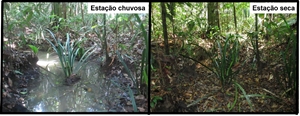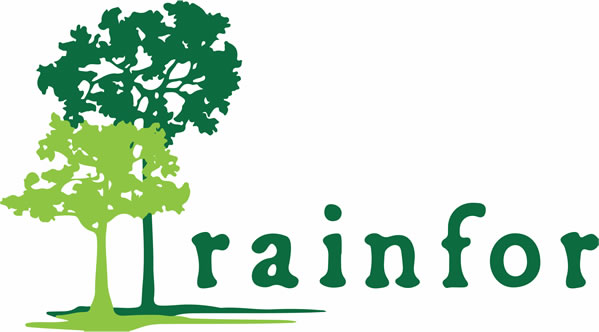The Amazon hydrological cycle is already changing due to climate change and this is expected to intensify in the future. The water availability is one of the main factors that influence plant growth and mortality, and the water table depth is an important indicator of access to groundwater. Forests that grow on shallow water tables (< 5 m depth) have easier access to water, however, during the rainy season, excess water generates soil waterlogging and, therefore, stress due to lack of oxygen, which compromises the plants growth.

Forests with shallow water table occupy approximately 50% of the Amazonian territory and are still quite neglected in ecological studies, but play a fundamental role as carbon sinks from the atmosphere, especially in periods of extreme drought.
The article by Sousa et al. shows that in forests with shallow water table the vegetation presents, on average, lower growth (i.e., lower biomass productivity), higher mortality and consequently lower aboveground biomass stock, as well as those forests located in drier climates. Biomass productivity is affected by the combination of climatic together with water table effects, where on average there is lower productivity where the climate is wet and the water table is very shallow (< 2m). Therefore, the study showed for the first time in the literature that the “two opposites” of water availability (excess and deficit) reduce biomass productivity, that is, carbon uptake, in Amazonian upland forests. The implication of the results is that changes in the hydrological cycle, such as an increase in the frequency of intense floods, can alter the dynamics of vegetation growth and mortality, reducing the carbon uptake from the atmosphere by plants, and intensifying the deleterious effects of climate change. On the other side, a change towards drier conditions (such as during droughts) would reduce the waterlogging stress and potentially increase growth in shallow water table forests.
The article “Water table depth modulates productivity and biomass across Amazonian forests” involved more than 100 researchers who are members of the PPBio (Programa de Pesquisa em Biodiversidade) and RAINFOR (Red Amazónica de Inventario Forestales) networks, in addition to important research institutions such as the Instituto Nacional de Pesquisas da Amazônia (INPA) and the University of Leeds. This research was published in the journal Global Ecology and Biogeography and is the result of the doctoral thesis by Thaiane Sousa, developed in the Graduate Program in Ecology at INPA, under the supervision of Dr. Flavia Costa.
The article can be accessed through the following link:
https://onlinelibrary.wiley.com/share/author/HW3VWBSKEPSSAJDPPJWZ?target=10.1111/geb.13531
